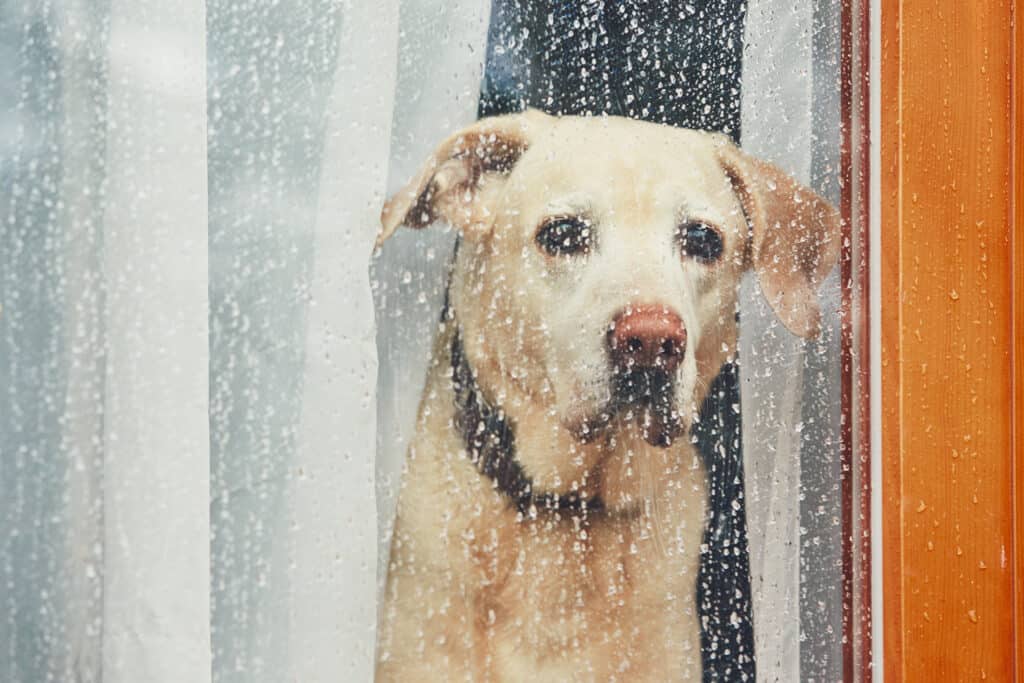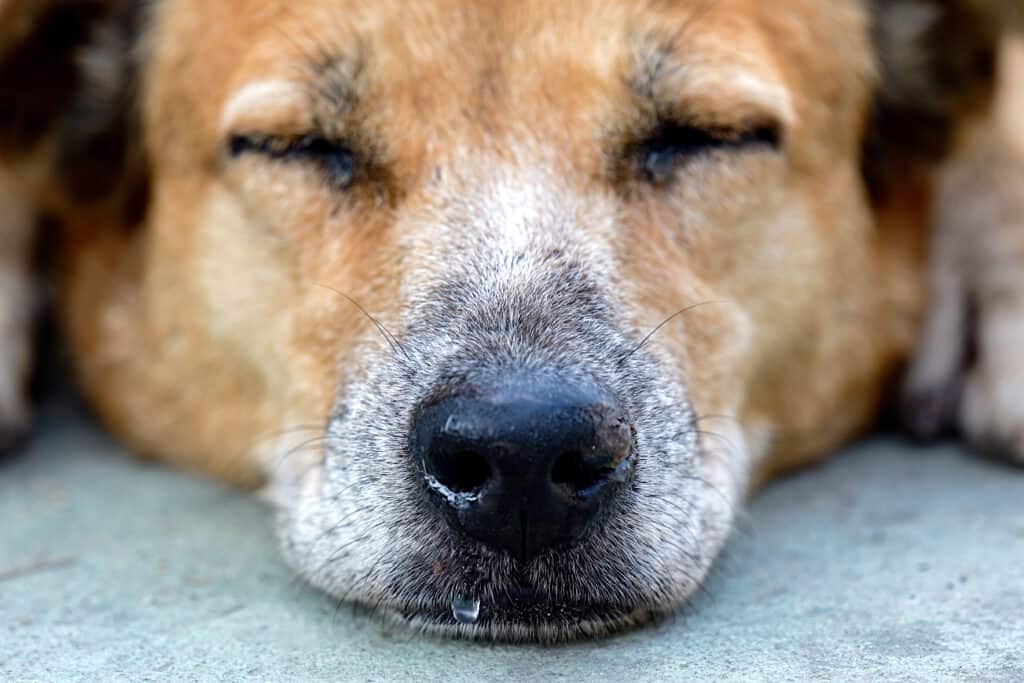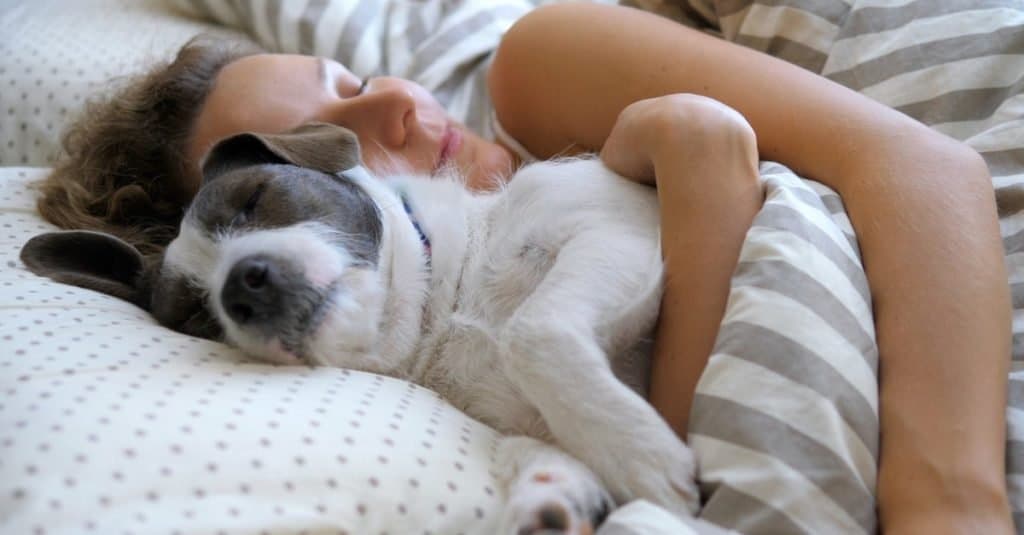You may find yourself wondering if it’s possible for a dog to become depressed. Maybe you noticed that their behavior changed and you were concerned about what it meant or what could be the cause. There are many reasons why a dog may become depressed and it’s important to be able to recognize the signs of depression in dogs so that you can get the help or treatment that your dog needs. Read on to learn more about the symptoms, treatment, and causes of depression in dogs.
What Does Depression Look Like in Dogs?

Dogs can become less active and enthusiastic when they are feeling depressed
©Jaromir Chalabala/Shutterstock.com
It’s hard to know exactly how a dog feels when dealing with depression. It’s not exactly the same way that humans experiences it, but there are a few similar traits. One thing to note is that it is rare for dogs to experience long-term depression, but they can experience short-term depression—especially during times to stress or change.
One of the first things that you may notice is that your dog becomes less active and more withdrawn. If your dog is usually hyper or very active, in a period of depression, its energy levels may drop and you will notice less enthusiasm from it. You may also notice that their eating habits change. A dog that may normally have no issue with eating, may suddenly avoid its food or only eat small amounts of it at a time.
Their sleeping habits can also change, in that they begin sleeping more or they may have trouble sleeping and wake up multiple times throughout the night. This may be accompanied by whimpering or whining sounds.
In some ways, depression for a dog is very similar to how it can be experienced in a human. Overall, it may appear as though your dog does not have the zest for life it once had, nor does it get any joy from fun activities that it used to enjoy.
Depression symptoms in a dog can often be very similar to other health issues, so if you notice any of these symptoms in your dog, you should schedule an appointment to see the vet as soon as you can so that any underlying health issues can be ruled out. That way you know for sure if what you are dealing with is a case of dog depression and not an undiagnosed health issue.
What Causes Dogs to Become Depressed?

Changes such as moving home can affect a dog and make them feel depressed
©Anake Seenadee/Shutterstock.com
There are many things that could lead a dog to become depressed, but one of the most common reasons for depression in dogs is a sudden major change. Sudden major changes could include things like moving into a new home, the addition of a new member of the family like a new pet, a baby, or even a spouse, or the sudden loss of a member of a household whether it be a person or a pet. Even sudden changes to the dog’s normal schedule may cause a period of depression, like a person working longer hours than normal and being away from the house more, or children going off to school. Any of these things can cause a tremendous amount of stress and anxiety for your dog which can lead to the development of depression.
Experiencing the loss of a member of the household, whether it’s the owner, a companion pet or any other regular member of the household, can have the strongest impact on a dog’s emotions and is one of the most common reasons for dogs to become depressed. If your dog is experiencing this after the passing of a loved one, it is normal behavior and is the dog’s response to the sudden change. The dog may also be reacting to the emotions of others in the home since dogs do tend to respond to the emotions of people around them. The lack of attention and uncertainty may cause the dog to withdraw and begin to exhibit signs of depression.
Dogs can also become depressed when there is a lack of physical and/or mental stimulation. Dogs need to be active—some dogs even more than others, like dalmations, Siberian huskies, golden retrievers, and Australian shepherds. These dogs need to be physically active more often than other dog breeds and if they don’t receive the exercise and play that they need to stay happy and healthy, they can become depressed. Exercise and play are important factors in every dog’s health.
Keeping a dog active helps reduce the chances of suffering from depression as well as keep it healthier even into old age. Make sure that you have enough mentally stimulating interactive toys for your dog to play with—especially if you are gone for a large part of the day and your dog is at home with no one to play with. This will give it something fun to do until you return home.
For the more active dogs, regular walks in the park or out in nature can help give it the physical stimulation it needs. Letting your dog go out for a run in the fresh air can do wonders for a dog’s mood and help keep its energy levels and enthusiasm up.
What Are the Treatments for Dogs With Depression?

Providing your dog with plenty of love can help them recover from depression
©DiMedia/Shutterstock.com
Luckily, most dogs will not experience long-term depression as we mentioned earlier. This means that many dogs will recover from their depression within a few days to a few months with the help of a little extra love and attention. You can help a dog recover from its depression simply by keeping it engaged, making sure that they get enough exercise (like going for walks), and giving them plenty of love.
When you notice that your dog is showing signs of happiness, make sure that you reward them for this behavior to help encourage them to feel excited and happy again. On the opposite end, try not to feed your dog treats when you see it is particularly down, as this may have the opposite of the intended effect and cause them to associate feeling down with being rewarded. This might encourage the dog to continue the behavior in hopes of having more rewards.
In some cases, if there was a loss of a companion pet, introducing a new pet into the household may help cheer them up again. But this has to be done carefully and with the needs of the family and dog taken into account, as introducing another pet too soon may add to stress and anxiety.
While your dog is going through this grieving stage, be sure that it has a place to retreat to that is comfortable where it will feel safe and secure. This could mean placing its bed in a quiet area or giving it a pile of blankets to lay on where it will feel comforted. Sometimes allowing the dog to have a moment of quiet and alone time can help it overcome the feelings quicker rather than not allowing your dog a chance to feel its emotions and trying to hurry it into activity too quickly. Be gentle with your dog during this time.
If you have given your dog time to recover from its depression and you’ve tried all of the steps above but it is still struggling, there are medications that can be used. The medications that are given to dogs that struggle with depression are the same ones that are given to humans like Zoloft, Paxil, and Prozac, but always get these medications prescribed by your veterinarian. Never give your dog medication that you already have on hand, as the vet will be sure that your dog gets the proper and safe dosage. There are other medications that the veterinarian may prescribe too that are made to deal with anxiety if your dog is suffering from this as well.
It is always recommended that you try to help your dog overcome its depression in a timely manner, that way the symptoms don’t progress. Medication is only recommended when all other methods have been exhausted. This is because depression in dogs usually resolves on its own over time as long as the dog is getting the love, attention, and exercise that is needed. If however, none of these things have helped your dog, then seeking medical help from a professional is recommended as soon as possible.
Normally, when a dog begins medication for depression, it can take up to two months for the drug to begin to take effect. Unlike humans that begin medication for depression and may remain on it for many years, a dog will usually show signs of recovery between six to 12 months after beginning the medication, after which it is recommended for the dog to be taken off of it.
Up Next
- The Flu In Dogs: Symptoms, Treatment, and Prevention
- Oral Penicillin and Your Dogs: Doses, Treatment, Risks, and More
- Hookworms in Dogs: Signs, Treatment, and Risks
- The Best Flea and Tick Treatments for Dogs: Reviewed and Updated for 2022
The photo featured at the top of this post is © Jaromir Chalabala/Shutterstock.com
Ready to discover the top 10 cutest dog breeds in the entire world?
How about the fastest dogs, the largest dogs and those that are -- quite frankly -- just the kindest dogs on the planet? Each day, AZ Animals sends out lists just like this to our thousands of email subscribers. And the best part? It's FREE. Join today by entering your email below.
Sources
- Fetch by Web MD, Available here: https://pets.webmd.com/dogs/features/depression-in-dogs
- American Kennel Club, Available here: https://www.akc.org/expert-advice/health/how-to-know-if-your-dog-is-depressed/
Thank you for reading! Have some feedback for us? Contact the AZ Animals editorial team.






